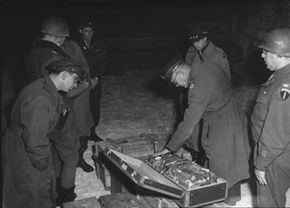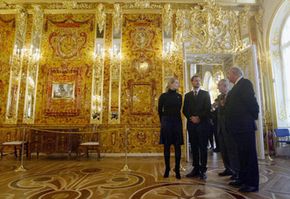At the start of World War II, Germany was in a deep financial depression. Its currency was worth nothing. In order to fund its war effort, the Nazi regime routinely looted gold from occupied countries. During the course of the war, the regime stole at least $400 million in gold from occupied nations and at least $140 million in gold from individuals, particularly those imprisoned in concentration camps [source: U.S. Department of State]. They were meticulous, raiding Jewish homes, safety deposit boxes and even removing gold dental fillings from people's teeth.
Most of the stolen gold was stored in Germany's Reichsbank, the bank of the Third Reich. But after a 1945 bombing raid, the Nazis moved the gold to a safer location. Much of it was taken to a potassium mine about 200 miles from Berlin. When Germany was overtaken and the Allied forces took over, laborers from this mine told American soldiers that they had watched as Nazi troops moved gold and art into hidden caves within the mine. At the end of the war, hundreds of millions in gold and silver bars, paper currency and art was recovered at the mine [source: Channel 4]. However, not all of the loot was found, and there could be millions more in stolen gold that's left in and around Germany.
Advertisement
A recent discovery has renewed world interest in the quest. Have treasure hunters really discovered the famed Nazi gold stash? Some say they have. Some even say they've found the Amber Room.




